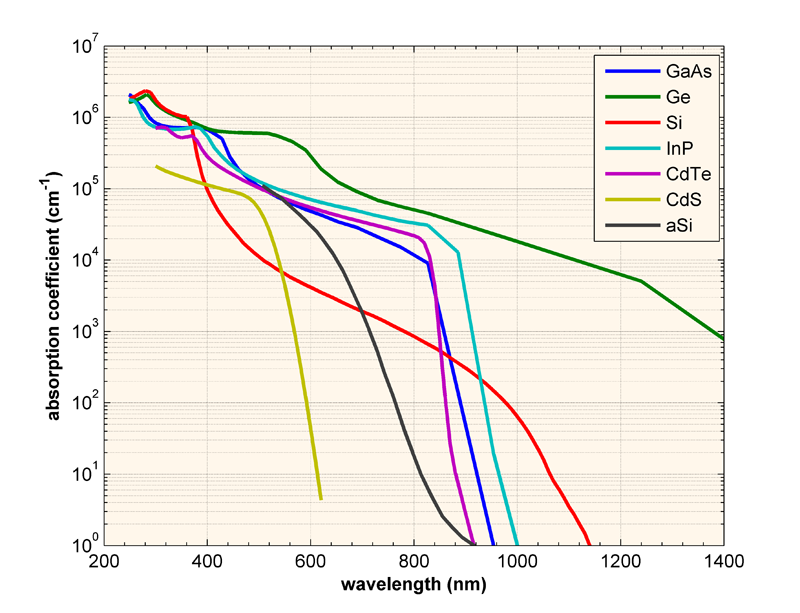Absorption Coefficient Definition and Formula
The absorption coefficient determination how far into a material light of a particular wavelength can penetrate before it is absorbed. In a material with a low absorption coefficient, light is only poorly absorbed, and if the material is thin enough, it will appear transparent to that wavelength. The absorption coefficient depends on the material and also on the wavelength of light which is being absorbed. Semiconductor materials have a sharp edge in their absorption coefficient, since light which has energy below the band gap does not have sufficient energy to excite an electron into the conduction band from the valence band. Consequently, this light is not absorbed. The absorption coefficient for several semiconductor materials is shown below.

The absorption coefficient, α, in a variety of semiconductor materials at 300K as a function of the vacuum wavelength of light.
The above graph shows that even for those photons which have an energy above the band gap, the absorption coefficient is not constant, but still depends strongly on wavelength. The probability of absorbing a photon depends on the likelihood of having a photon and an electron interact in such a way as to move from one energy band to another. For photons which have an energy very close to that of the band gap, the absorption is relatively low since only those electrons directly at the valence band edge can interact with the photon to cause absorption. As the photon energy increases, not just the electrons already having energy close to that of the band gap can interact with the photon. Therefore, a larger number of electrons can interact with the photon and result in the photon being absorbed.
The absorption coefficient, α, is related to the extinction coefficient, k, by the following formula:
![]()
where λ is the wavlength. If λ is in nm, multiply by 107 to get the absorption coefficient in the the units of cm-1.
Additional optical properties of silicon are given in the page Optical Properties of Silicon.

